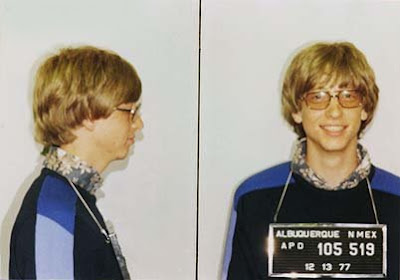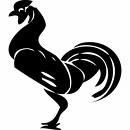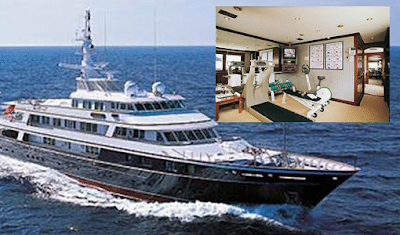Monday, February 15, 2010
Trading Forex- Renminbi pegged to the Dollar.
Historic financial milestone was reached in China. National foreign reserve holdings exceeded the $2 trillion mark, as money pours back into China to take advantage of faster economic growth. Swiftly inflating asset prices are also cited as a reason. The second quarter gross domestic product figures are expected to record strong growth, of about 8% for the last three months. The People's Bank of China, nations central bank, announced on its website that foreign reserves
reached $2,132 billion at the end of June following massive accumulation of funds in the second quarter.
In spite of views to the contrary, oversized foreign reserves are a serious headache. For example, in order to keep the Renminbi stable,the central bank buys US dollars and other foreign currencies coming into China, and then holds the funds on its balance sheet. This creates a de facto "peg" of Renminbi to US dollar. The latest figures also represent an abrupt reversal of an emerging trend of the previous two quarters.
The influx of funds is certain to renew pressure from trading partners for a revaluation of the Renminbi. Timing is not very challenging, since the government and domestic business are focused on financial stability. It appears that Beijing is finding itself in a squeeze not unlike the one that earlier in the decade, with a flood of hot money trying to force the authorities hand on the
currency issue. The same expectations of Renminbi appreciation will start to surface again soon and possible become a focal point going forward.
China maintained a virtual US dollar peg for more than a decade until mid-2005, prompting complaints from its major trading partners that Chinese exporters held an unfair pricing advantage. Beijing's move to a slightly more flexible exchange rate in mid-2005 and, relieved much of the political pressure. Result was a 20% appreciation against the US Dollar over the following three years. Since mid-2008, however, the Renminbi has barely moved against the greenback as Chinese exporters' sales overseas have dropped sharply because of the global economic downturn.
The reserve build-up in the second quarter was over $170 billion, including a new monthly record in May of $80.6bn.The quarterly figure overtakes China's trade surplus by large margin, as well as direct foreign investment over the same stretch. Some see is as proof that the accumulation of funds inside the country is being caused by other factors. One of them is hoarding of domestic assets in expectation of currency appreciation.
Foreign reserves increased just $7.7bn in the first three months of the year, and $40 billion in the fourth quarter of 2008, as foreign firms sent profits home and banks demanded repayment of loans. Some financial analysts calculated that after taking account various factors like foreign investment, trade surplus and impact of changes in currency changes, about $70 billion of this money came into China in the second quarter. This is in contrast to preceding quarter, when
about $65 billion was extracted.
With world economy showing recovery, it is certain that question of Renminbi valuation will become politically charged again. Chinese financial authorities will be pressured into more freedom in currency movement. More likely than not, they will relent. Question is, just how tight the bounds are, with a repeat of 2005-2008 policy being probable. At the moment we can't reasonably expect fully free floating currency, even though it will have to happen eventually.
About the author:
Mike P. Kulej is a Chief Forex Strategist for Spectrum Forex LLC. He specializes in mechanical trading systems as explained on www.spectrumforex.com. Spectrum Forex LLC offers numerous services to individual traders. He also publishes trading blog www.fxmadness.com . With questions and comments e-mail him at kulej@spectrumforex.com.
related articles:
click here 1 2 3 4 5 6 7 8 9 10 11 12 13 14 15 back
Philippines Light Rail Transit Public Transportation
The Manila Light Rail Transit System (Filipino: Sistema ng Magaan na Riles Panlulan ng Maynila),[citation needed] popularly known as the LRT, is a metropolitan rail system serving the Metro Manila area in the Philippines. Its twenty-nine stations over 28.8 kilometers (17.9 mi) of mostly elevated track form two lines. LRT Line 1, also called the Yellow Line, opened in 1984 and travels a north–south route. LRT Line 2, the Purple Line, was completed in 2004 and runs east–west.
The LRT is operated by the Light Rail Transit Authority (LRTA), a government-owned and controlled corporation under the authority of the Department of Transportation and Communications (DOTC). Along with the Manila Metro Rail Transit System (MRT, also called the Blue Line), and the Philippine National Railways (PNR), the LRT is part of Metro Manila's rail transportation infrastructure known as the Strong Republic Transit System (SRTS)
Stations
 The People Power Revolution was a series of nonviolent and prayerful mass street demonstrations in the Philippines that occurred in 1986. It was the inspiration for subsequent non-violent demonstrations around the world including those that ended the communist dictatorships of Eastern Europe.
The People Power Revolution was a series of nonviolent and prayerful mass street demonstrations in the Philippines that occurred in 1986. It was the inspiration for subsequent non-violent demonstrations around the world including those that ended the communist dictatorships of Eastern Europe.

 In 1990, it was voted by the BMW Tropical Beach Handbook as one of the best beaches in the world
In 1990, it was voted by the BMW Tropical Beach Handbook as one of the best beaches in the world
 Barasoain Church (also known as Our Lady of Mt. Carmel Parish) is a Roman Catholic church built in 1630 in Malolos City, Bulacan.
Barasoain Church (also known as Our Lady of Mt. Carmel Parish) is a Roman Catholic church built in 1630 in Malolos City, Bulacan.
 Laguna de Bay (Filipino: Lawa ng Bay; English: Laguna de Bay is the largest lake in the Philippines and the third largest freshwater lake in Southeast Asia
Laguna de Bay (Filipino: Lawa ng Bay; English: Laguna de Bay is the largest lake in the Philippines and the third largest freshwater lake in Southeast Asia
 Malacañan Palace, is the official residence of the President of the Philippines.
Malacañan Palace, is the official residence of the President of the Philippines.






















 >
>




















































No comments:
Post a Comment